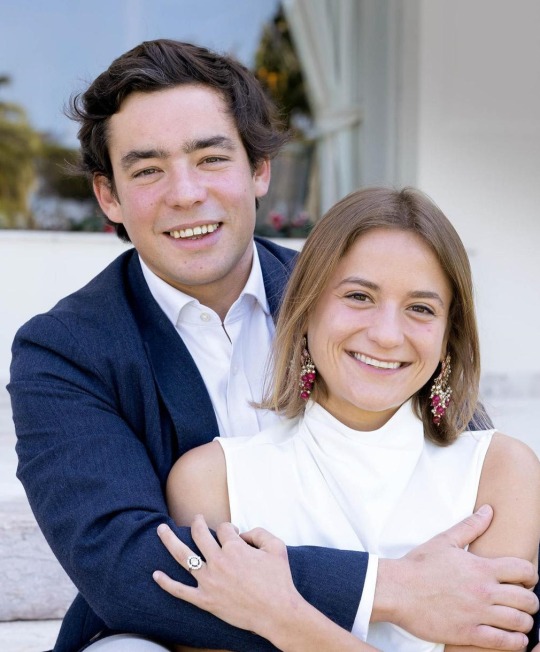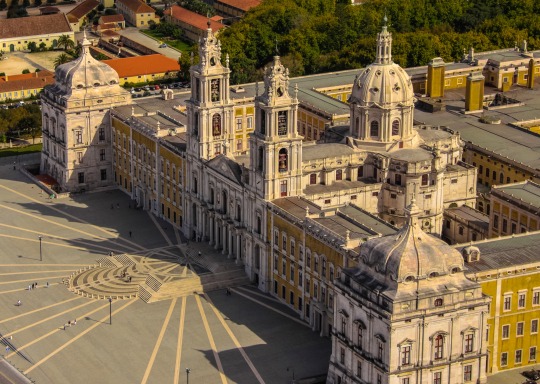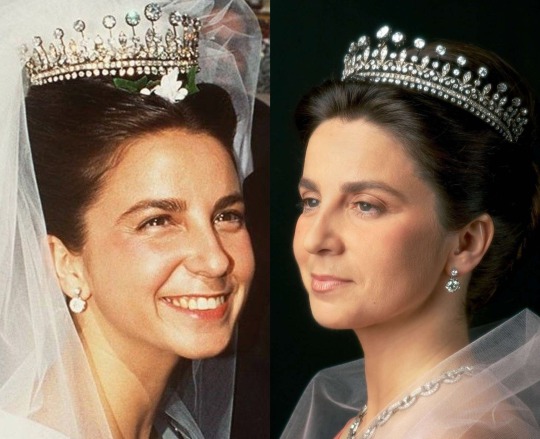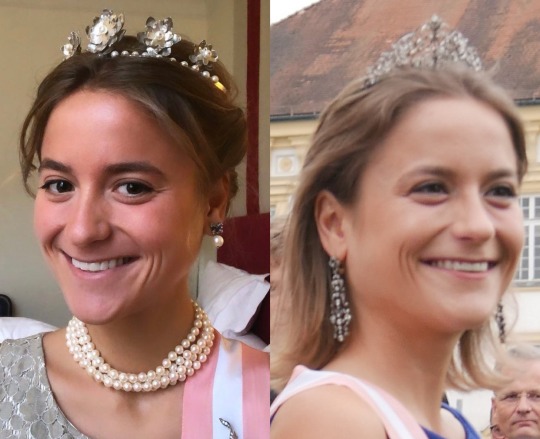#lui coimbra
Explore tagged Tumblr posts
Text
Zeca Baleiro lotou duas sessões ontem (25), no Teatro Arthur Azevedo
Foto: Patrícia Castro “Quero ficar no teu corpo feito tatuagem”. Os versos iniciais da clássica “Tatuagem” (Chico Buarque/ Ruy Guerra), com que Zeca Baleiro abriu o show “Fado Tropical”, ontem (25), no Teatro Arthur Azevedo, bem traduzem a relação do maranhense com seu público, consolidada em 26 anos, se contarmos apenas a partir de sua estreia fonográfica, com “Por Onde Andará Stephen Fry?”…

View On WordPress
#acessibilidade cultural#alice ruiz#Antônio Fagundes#Cássia Kis#celso borges#censura#chico buarque#disco#ditadura militar#Dom Quixote de Nenhum Lugar#Fado Tropical#João Ricardo#língua brasileira de sinais#lúcia santos#libras#lui coimbra#luiz cláudio#Manoel Carlos#Mateus Nachtergaele#música#musical#novela#Patrícia Castro#Paulo Mendonça#Processo de Conscerto do Desejo#ramiro musotto#Regina Duarte#rui mário#ruy guerra#show
0 notes
Text
Infanta Maria Francisca's Wedding Tiara

The Duke and Duchess of Braganza have announced that the wedding of Infanta Maria Francisca, Duchess of Coimbra, and Duarte de Sousa Araújo Martins will take place on Saturday, October 7th at the Basilica of Our Lady and Saint Anthony within the Palace of Mafra. Thanks to an interview with Observador, we know all about the bride's planned wedding jewelry. The quotes below have been run through Google translate.

Infanta Maria Francisca will wear Queen Amélie’s Diamond Tiara which is the same one worn by her mother, the Duchess of Braganza, at her wedding in 1995. "I feel very honored, very lucky, that they lent it to me, because it is a very valuable tiara. I feel that I am not that worthy of wearing the tiara and I am really happy that they gave me this opportunity." I don't have a post on it yet but here are some from other blogs. It was made in 1886 by Leitão & Irmão and was a wedding gift to Queen Amélie from her father-in-law, King Luís I of Portugal, so you'll sometimes see it called the Dom Luis Diadem.

Along with the tiara, Maria Francisca will wear the same diamond earrings that were worn by her mother on her wedding day. They were a gift from the Duchess of Braganza's mother, Raquel Pinheiro de Castro Curvello.

Maria Francisca will also wear a sapphire and diamond bracelet that belonged to Queen Amélie on loan from a friend. "A very dear friend of mine, who has an antique shop, is going to lend me a Queen Amélie bracelet. He told me 'I have this bracelet from Queen Amélie that I bought at an auction house and I insist that you wear it because it belongs to your family and has sentimental and historical value'."

For the reception after the wedding, Maria Francisca will wear a pair of earrings that belonged to her grandmother and namesake, Princess Maria Francisca of Orléans-Braganza. The diamond from her engagement ring was taken from these earrings and the groom replaced it and another diamond with emeralds. "Both in the ring and in the earrings, I have my grandmother Francisca and Duarte represented."

The former Portuguese royal family are generally well regarded and even attend state banquets in Portugal. We already know that some of the Lux royals will be there and I also expect other former royals to attend.
The wedding will be televised at 3:00pm local time on TVI (Televisão Independente) and I'll post a non-geoblocked link if I can find one.
#Tiara Talk#Infanta Maria Francisca#Portugal#Portuguese Royal Family#tiara#bridal tiara#Duchess of Braganza#royal jewels#royalty#royals#diadem
119 notes
·
View notes
Text
2 notes
·
View notes
Text
Há 24 detidos por crime de incêndio, 80% em prisão preventiva
A ministra da Justiça disse no parlamento que em setembro havia 24 pessoas detidas por crime de incêndio, 80% das quais em prisão preventiva, ouvindo críticas do Bloco de Esquerda ao “populismo penal” do primeiro-ministro sobre os incêndios.

Na audição regimental da equipa do Ministério da Justiça que hoje decorreu no parlamento, a ministra Rita Alarcão Júdice, apresentou dados da Polícia Judiciária (PJ) sobre incendiários detidos.
A governante respondia ao deputado Fabian Figueiredo, do Bloco de Esquerda, sobre os “alegados interesses que sobrevoam os incêndios” em Portugal, em referência às declarações do primeiro-ministro, Luis Montenegro, na sequência dos grandes fogos das regiões norte e centro.
A ministra disse que em setembro havia 24 pessoas detidas por “fortes indícios” de terem causado incêndios, florestais e não florestais, e que 80% se encontravam em prisão preventiva, com detidos em várias regiões do país.
“O que está a ser feito é a investigação profunda destas matérias de quem alegadamente perpetrou estes incêndios e perceber se existe um padrão que motive novas investigações. Não podemos é ficar apenas satisfeitos com a mera detenção, porque temos de perceber se existe um padrão”, disse a ministra, referindo não poder acrescentar mais sobre matérias em investigação criminal.
Acrescentou que está a ser estudada a inclusão da PSP nas equipas que investigam os incêndios e que às duas que funcionam no norte e centro pode vir a juntar-se uma terceira na zona sul, onde ainda não existe nenhuma equipa dedicada.
“Respondeu com dados sobre incendiarismo, que é um fenómeno que é preciso atender, combater, com base no conhecimento científico, evitando o populismo penal, que foi o que aconteceu”, comentou o deputado bloquista.
O parlamentar referia-se às declarações de Montenegro, que invocou alegados interesses em torno dos incêndios, entretanto desmentidos por investigadores especializados da PJ.
Questionada pelo Livre sobre a impugnação judicial dos termos do concurso para recrutamento de 570 novos funcionários judiciais, aberto a 10 de setembro, a ministra reiterou que os termos são iguais aos aplicados no concurso interior e que não foram questionados pelo Sindicato dos Oficiais de Justiça (SOJ), que interpôs a ação, acrescentando que ao contrário do concurso anterior, com pouco mais de 100 lugares e aos quais apenas houve cinco candidatos, este tem já 1.700 candidatos.
“Não obstante existir esta vontade de criar problemas numa solução que é urgente, temos de lidar com ela”, disse a ministra sobre a ação judicial.
Sobre o Centro de Estudos Judiciários (CEJ), Rita Alarcão Júdice disse que está a ser revisto o modelo de ingresso, prevendo-se alterações nas quotas, no processo de seleção e nos exames previstos, e adiantou que as obras do novo polo de Vila do Conde não estarão prontas a tempo do arranque do próximo ano letivo, mas que este vai arrancar com 60 vagas, em instalações provisórias, ainda em estudo com a autarquia local, segundo informações também prestadas pelo gabinete da ministra.
Depois de na intervenção inicial a ministra ter apresentado um primeiro balanço da agenda anticorrupção, do qual ressalta o código de conduta para o Governo e a criação do grupo de trabalho que vai preparar o novo regime jurídico da perda de vantagens da atividade criminosa – liderado pelo professor da Universidade de Coimbra Pedro Caeiro – PS e Iniciativa Liberal (IL) deixaram críticas à falta de ação e medidas concretas nesta matéria.
A ministra remeteu para a comissão eventual criada junto do parlamento o envio das propostas de diploma sobre as matérias em causa, como a regulamentação do ‘lobby’, algo que Mariana Leitão (IL) criticou, assim como a “falta de densificação” de algumas medidas da agenda.
Sobre reinserção social, o Governo reafirmou a intenção de rever a carreira dos vários técnicos afetos a esta área e adiantou que neste momento já não existe lista de espera para entrada em centros educativos para cumprimento de medidas tutelares educativas.
0 notes
Text
Campo Pequeno vive una noche de emociones en homenaje a Fermín Bohórquez
Este jueves, el coso de Campo Pequeno de Lisboa acogía la segunda corrida de su temporada, en la que se lidiaba en un homenaje a Fermín Bohórquez un serio encierro de Vinhas. Con él, hacían el paseíllo Ana Batista, Moura Caetano, Telles Bastos, Duarte Pinto, Andrés Romero y Luis Touxinol JR, con forçados de Coimbra, … La entrada Campo Pequeno vive una noche de emociones en homenaje a Fermín…
0 notes
Text
10 juin : la fête nationale du Portugal célèbre un poète
Ce 10 juin est certainement la fête la plus importante au Portugal, après le 25 avril, une fête qui se décline en plusieurs volets. Tout un peuple célèbre d’abord son appartenance à la culture lusitanienne, dans le pays même mais aussi au sein des communautés portugaises installées à l’étranger (un tiers de la population tout de même !). C’est la langue portugaise qui est mise à l’honneur aujourd’hui. Mais cette date, le Dia de Portugal, de Camões e das Comunidades Portuguesas, est surtout pour les Portugais le jour anniversaire de la mort de Luis de Camões, un 10 juin 1580, poète et dramaturge, auteur des Lusiades, épopée qui raconte les conquêtes du Portugal. Si on ne fête pas l’anniversaire la naissance du poète, c’est que la date est inconnue. On sait juste qu’il avait environ 55 ans à son décès.
Le 10 juin a d’abord été la fête de Lisbonne, dès 1910. La date est devenue la fête nationale du Portugal à partir de 1933 sous le nom de « Jour de la race » (dia da raça). C’est en 1977, seulement, qu’elle a pris son appellation actuelle.
Les célébrations officielles du 10 juin ont commencé hier à l'Université de Coimbra, où se déroule la cérémonie d'ouverture des célébrations du 500e anniversaire de la naissance de Luís de Camões que l’on suppose né en 1525.
Ce matin, la levée du drapeau national, qui marque habituellement le début des célébrations du 10 juin, a lieu, symboliquement, au mémorial aux victimes des incendies de forêt de 2017, à côté de l'Estrada Nacional 236-1, en présence du chef de l'État.
Le programme de Marcelo Rebelo de Sousa comprend ensuite une messe dédiée aux victimes des incendies et une visite à l'exposition des ressources et capacités militaires des forces armées portugaises, à Figueiró dos Vinhos.
Ce soir, à Castanheira de Pera, le président de la République reçoit les salutations du corps diplomatique accrédité au Portugal, à Praia das Rocas, à Castanheira de Pera, où est donné un concert de l'Orchestre léger de l'Armée, ouvert à la population.
Chaque année, le président de la République choisit une ville pour accueillir des célébrations officielles. En 2016, elles ont eu lieu pour la première fois dans deux villes : Lisbonne et Paris. En 2017, c’était à Porto et dans les villes brésiliennes de Rio de Janeiro et de São Paulo. En 2019, elles se sont déroulées à Portalegre ainsi qu’en république du Cap-vert. En 2020, il était prévu une fête conjointe à Madère et en Afrique du Sud où vit une communauté portugaise, mais dans le contexte de la pandémie de Covid-19, on s’est contenté d’une cérémonie symbolique au monastère des Hiéronymites (Mosteiro dos Jerónimos), à Lisbonne. En 2021, le 10 juin était célébré à Funchal (capitale de Madère). En 2022, les célébrations du 10 juin avaient été organisées à Braga et à Londres au sein de la communauté portugaise vivant au royaume-Uni… En 2024, les célébrations s'étendront à la Suisse, parmi les communautés d'émigrants portugais, avec la participation, mardi et mercredi, du président de la République, Marcelo Rebelo de Sousa, ainsi que du Premier ministre, Luís Monténégro.
Un article de l'Almanach international des éditions BiblioMonde
0 notes
Text
The 6 most famous landmarks in Portugal to visit
Get ready to explore some of the most famous landmarks that this beautiful country has to offer. Portugal, with its rich history, stunning architecture, and breathtaking landscapes, is a treasure trove of must-visit sites. From ancient castles to magnificent palaces and picturesque coastal towns, Portugal's landmarks offer a glimpse into its vibrant culture and storied past. Among the top landmarks are the Belem Tower and Jeronimos Monastery in Lisbon, both of which are UNESCO World Heritage Sites that reflect Portugal's Age of Discoveries. The Pena Palace in Sintra, with its whimsical architecture and lush gardens, transports visitors to a fairytale world. For those interested in medieval history, the Castle of the Moors, also in Sintra, offers stunning views and a journey back in time. In Porto, the Ribeira district and the iconic Dom Luis I Bridge showcase the city's unique charm and vibrant riverside atmosphere. The historic university town of Coimbra, with its ancient university and beautiful library, is another must-see. Whether you’re exploring the narrow streets of Alfama or enjoying the scenic views from Cape Roca, Portugal's famous landmarks promise an unforgettable experience. So, pack your bags and get ready to discover the most famous landmarks in Portugal, each offering its own unique story and beauty.
Here are some of the most famous landmarks in Portugal to visit:
1. Lisbon's Belém Tower: Portugal's Age of Discovery is embodied in the renowned Belém Tower, also known as Torre de Belém. Constructed during the initial years of the 16th century, it functioned as a stronghold to safeguard Lisbon and as a symbolic entrance to the city. Its unique Manueline architecture, which is embellished with fine carvings and nautical themes, pays homage to Portugal's naval history. Its interior is open for exploration, and ascending the winding staircase will reward visitors with expansive views of the Tagus River and the surroundings. When learning about Lisbon's rich past and culture, visitors must see the Belém Tower, a UNESCO World Heritage Site.
2. Sintra's Pena Palace: Pena Palace is a castle from a fairy tale that appears to be right out of a novel, nestled in the lush forests of the Sintra Mountains. It was constructed in the 19th century and is a fanciful and vibrant masterpiece that blends aspects of Manueline, Gothic, Moorish, and Romantic architecture. It is one of Portugal's most Instagram-worthy sites because of its vivid yellow and red walls, exquisite details, and lovely setting. Its lavish rooms are open for exploration, and guests can take in breath-taking vistas of the surrounding countryside as well as stroll through the parkland. A UNESCO World Heritage Site, Pena Palace is the centerpiece of any vacation to Sintra.
3. Lisbon's Jerónimos Monastery: Representing Portugal's heyday of adventure, the Jerónimos Monastery, also known as Mosteiro dos Jerónimos, is a magnificent example of Manueline architecture. Constructed in the sixteenth century to honor Vasco da Gama's victorious journey to India, this building is well-known for its intricate carvings, cloisters, and exquisite chapels. The stunning Church of Santa Maria, with its elaborate vaulted ceilings and superb stained-glass windows, is the monastery's focal point. In addition, visitors can explore the Monument to the Discoveries, which honors Portugal's explorers, and the nearby Maritime Museum. Not to be missed is the Jerónimos Monastery, a cultural treasure recognized by UNESCO as a World Heritage Site.
4. Lisbon's São Jorge Castle: São Jorge Castle, perched atop Lisbon's highest peak, provides expansive views of the city and the Tagus River. It was initially constructed in the eleventh century by the Moors, and for many years afterward, it was both a royal home and a fortification. Because of its strong walls, towers, and archaeological sites, it is now a well-liked tourist destination. The ramparts of the castle can be explored, the archeological museum can be visited, and plays and cultural events can be enjoyed within its gates. São Jorge Castle is a live example of Lisbon's rich and varied history, in addition to being a historical site.
5. Porto's Dom Luís I Bridge: The Dom Luís I Bridge in Porto, which spans the Douro River, is a famous landmark and an engineering marvel. When the Gustave Eiffel-designed bridge was finished in 1886, it held the record for being the longest iron arch bridge in the world. These days, it serves as a link between the lively Vila Nova de Gaia, which is home to many of Porto's renowned port wine cellars, and the ancient Ribeira neighbourhood. Take a leisurely cruise along the Douro to see the bridge from below, or wander over the upper deck to enjoy panoramic views of the river and the city skyline. A beloved monument that embodies Porto's beauty and charm is the Dom Luís I Bridge.
6. Coimbra, at the University of Coimbra: One of the oldest universities in the world and a UNESCO World Heritage Site is the University of Coimbra. Its magnificent architectural legacy and rich history date back to its founding in 1290. Perched atop a hill with sweeping views of the city and Mondego River lies the university's main campus, called the Alta and Sofia. Its ancient structures are open for exploration by guests. Two such buildings are the Royal Palace of Alcáçova, which contains the university's administrative offices, and the Joanine Library, which boasts exquisite Baroque architecture and a collection of rare literature. The university's 18th-century botanical garden, with its wide variety of plants and serene ambiance, is another well-liked destination.
Conclusion
Visiting the most famous landmarks in Portugal is an adventure that promises rich cultural experiences and stunning sights. From the historic Belem Tower and Jeronimos Monastery in Lisbon to the enchanting Pena Palace and Castle of the Moors in Sintra, each landmark offers a unique glimpse into Portugal’s rich history and architectural grandeur. The vibrant Ribeira district in Porto and the historic treasures of Coimbra further add to the diverse tapestry of attractions that make Portugal a must-visit destination. Whether you are wandering through the narrow streets of Alfama or standing at the edge of Cape Roca, the westernmost point of mainland Europe, Portugal's landmarks leave a lasting impression with their beauty and historical significance. To embark on this unforgettable journey, securing a Portugal visa is the first step. This simple process opens the door to exploring all that Portugal has to offer, from its iconic sites to its warm and welcoming culture. So, prepare your travel plans and get ready to experience the wonders of Portugal. With a Portugal visa in hand, you are all set to discover the incredible landmarks that make this country a truly unique and memorable destination. Enjoy the journey and create memories that will last a lifetime.
0 notes
Text

Cabreira e o Rio Ceira. União das Freg. de Colmeal e Cadafaz.
Conc. de Gois, Serra do Açor-Beira Serra, Distrito de Coimbra.
Foto de:
Luis Vicente
0 notes
Photo





300 euros de réduction proposé par la clinique Ferticentro : opération « United Colors of Life »
Notre clinique conseillée de Ferticentro https://www.ferticentro.fr/fr/ à Coimbra au Portugal nous informe d’une opération spéciale cet été dénommée « United Colors of Life »
On peut la résumer ainsi : 3 mois/ 300 euros/ 30 traitements.
Voici les informations que nous avons reçues sur le fonctionnement et les conditions de cette opération :
-Il s’agit d’une réduction de 300 euros ( qui se cumule avec le tarif spécial accordé aux membres des Cigognes de l’Espoir https://www.ferticentro.fr/fr/tarifs-/ sur un traitement initial complet et surtout sur les forfait tout compris .Voir en bas de page ici https://www.ferticentro.fr/fr/don-d-ovocytes/ )
-Cette opération est valable 3 mois jusqu’au 21 septembre 2023
-Elle est réservée aux 30 premiers patients qui confirmeront un traitement.
Cette opération est ouverte aux couples hétérosexuels et lesbiens et aux femmes seules
Comment en bénéficier :
Pour bénéficier de cette opération il faut impérativement être en contact avec une des coordinatrices de la clinique et lui parler de cette opération « United Colors of Life » . En retour, elle vous fera parvenir un « Voucher » avec la réduction mentionnée. Si vous confirmer votre traitement avant le 21 septembre par le paiement d’un acompte, cela activera le voucher et la réduction.
0 notes
Text
Embajadores de Chile y Brasil visitan Monterrey para trabajar en proyectos conjuntos | Posta #INFOCOLOSIO
El presidente municipal de Monterrey, Luis Donaldo Colosio Riojas, ha recibido a los embajadores de Chile y Brasil en México, Beatriz Sánchez Muñoz y Fernando Coimbra, respectivamente, para trabajar en proyectos conjuntos enfocados en combatir el cambio climático y mejorar el intercambio educativo y comercial entre ambas partes. Origen: Embajadores de Chile y Brasil visitan Monterrey para…

View On WordPress
0 notes
Text
Canções Urbanas
CANÇÕES URBANAS – MAURO MARCONDES(Dueto com Áurea Martins, homenagem à Copacabana, e arranjos de Leandro Braga e Lui Coimbra)“CANÇÕES URBANAS” é o resultado das influências musicais e experiências de vida em metrópoles, com toda a diversidade urbanística, cultural e humana (e desumana) presente nas cidades brasileiras, do compositor Mauro Marcondes e de seus parceiros. Os arranjos primorosos do…

View On WordPress
0 notes
Text
Miguel Coimbra : Un illustrateur incroyable
Petit billet aujourd’hui pour vous présenter l’illustrateur Miguel Coimbra, que j’ai découvert grâce au jeu de société “7 Wonders”, et c’est un énorme coup de coeur. J’ai tout de suite trouvé son univers graphique fascinant, avec des lumières et une profusion de détails à couper le souffle. Et même si le jeu en lui même était très bien fait, ses illustrations sont pour moi LE point fort du jeu tant de fois nominé !
Il a également travaillé sur d’autres jeux, que je vous invite à découvrir sur son site Internet ici :
https://miguelcoimbra.artstation.com/projects
Une belle découverte ! ^^

9 notes
·
View notes
Text
IP lança campanha de apoio a peregrinos a caminho de Fátima
A Infraestruturas de Portugal (IP) iniciou hoje uma campanha de apoio aos peregrinos de Fátima, nos distritos de Aveiro, Coimbra, Leiria e Santarém, como forma de prevenção para os acidentes rodoviários.

A campanha "Peregrinação Segura - Fátima 2024" inclui "ações de sensibilização direta junto dos peregrinos", tendo em atenção que as vias que estes utilizam "têm tráfego rodoviário significativo, onde se praticam velocidades de circulação elevadas, aumentando substancialmente a sua exposição ao risco, bem como a gravidade de um eventual acidente, sendo fundamental a adoção de percursos por vias alternativas e com menor tráfego rodoviário".
Em comunicado, a IP revela que "de forma a minimizar a ocorrência de incidentes, foram criados caminhos alternativos em locais de maior tráfego rodoviário, bem como implementado um conjunto de condicionamentos rodoviários nos principais itinerários utilizados pelos peregrinos no acesso ao Santuário de Fátima".
Segundo a Infraestruturas de Portugal, até 13 de maio será implementado um alternativo do IC2 para a antiga Estrada Nacional 1, na zona de Fornos, Coimbra, o mesmo acontecendo entre Antanhol e Cernache.
Já no distrito de Leiria, registar-se-á a supressão da via direita no IC2 em diversos troços.
A peregrinação de 12 e 13 de maio ao Santuário de Fátima será presidida pelo arcebispo de Barcelona, cardeal Juan José Omella.
Omella presidiu à Conferência Episcopal Espanhola até ao início de março deste ano, quando foi substituído por Luis Javier Arguello Garcia, arcebispo de Valladolid.
0 notes
Text
Serio encierro de Vinhas para la corrida del 8 de agosto en Campo Pequeno
El coso de Campo Pequeno de Lisboa acogerá, el próximo 8 de agosto, la segunda corrida de su temporada, en la que se lidiará un serio encierro de Vinhas. Con él, harán el paseíllo Ana Batista, Moura Caetano, Telles Bastos, Duarte Pinto, Andrés Romero y Luis Touxinol JR, con forçados de Coimbra, Monsaraz y AC … La entrada Serio encierro de Vinhas para la corrida del 8 de agosto en Campo Pequeno se…
0 notes
Text
King Pedro V’s 8th sibling: Infante Augusto, Duke of Coimbra

Born: 4 November 1847 Necessidades Palace, Lisbon, Portugal Died: 26 September 1889 (aged 41) Lisbon, Portugal
Augusto Maria Miguel Gabriel Rafael Agrícola Francisco de Assis Gonzaga Pedro de Alcântara Loiola of Saxe-Coburg-Gotha and Bragança was born in Lisbon the fifth son of Queen Maria II of Portugal and her King consort Fernando II. Augusto was created Duke of Coimbra and had the additional title Duke of Saxony through his father. He had the style of His Royal Highness.
In late 1861, three of his brothers the king Pedro V, Infante João, Duke of Beja and Infante Fernando all fell ill and died. He became heir presumptive to another of his brothers and the new king, Luis I on 27th December 1861 following the death of his brother João. He remained heir until 28th September 1863 and the birth of Infante Carlos the son of king Luis.
Augusto had a career in the Portuguese Army and became general of a division. He died in Lisbon unmarried and without issue in 1889. He is buried at the Royal Pantheon of the Bragança Dynasty.
6 notes
·
View notes
Text
Confinement(s) et temps (finement, aussi) libre...
La seule chose que l'on puisse trouver positive dans le confinement macronien, c'est qu'on a l'impression d'avoir du temps “pour soi”, une chose rare dans notre temps si soumis aux ondes, aux claviers, à nos satanés portables, à des “G” qui se comptent 4 ou 5, et à des sollicitations déprimantes telles que les programmes-télé “à la mode Delphine Ernotte” (synonyme de con-centration sur la disparition de l'homme-blanc-catho-hétéro-de droite)… Evidemment, cette non-liberté est une fausse impression, car… qu'est-ce que “se sentir plus libre” quand on est assigné à résidence et privé de toute liberté de mouvement ? Réponse : c'est un “piègeac” !
Contraint et forcé, je m'étais donc laissé convaincre par mon libraire habituel du charme douteux des commandes via internet et du glanage de petits sacs supposés contenir ce que j'avais commandé, le tout étant réglé par un mode de paiement refermé sur lui-même, et dit “sans contact” pour faire croire aux gogos que c'est un progrès… (NDLR : mais comme rien n'est jamais gratuit, cette nouvelle invention ne l'est pas non plus : elle nous prépare, en douce et sans douleur immédiate, à la suppression définitive de l'argent fiduciaire, ce qui sera sans doute l'avant-dernière étape dans notre asservissement à la puissance administrative et à son bras armé, la technologie anti-humaine… Et à notre entrée dans un monde effroyable, qui ressemblera comme un frère siamois à un “paradis à la chinoise”).
Et c'est là que l'enchaînement des faits peut amener à se dire que “tout n'est pas perdu”… comme tous ces français qui voient un motif de ne pas désespérer dans les deux épisodes de beau temps qui ont escorté les deux confinements qui nous ont été imposés (NDLR : pour le moment, car nos confineurs-par-système vont avoir du mal à se priver d'une 3 ème punition, voire plus, alors que que rien de convaincant n'est venu conforter un tant soit peu les théories des hoquets de cette non-médecine anti-scientifique) : rarement, avons-nous été gâtés aussi généreusement. Merci, Madame la Météo ! Cette dernière remarque nous ramène aux trois idées dont j’aimerais que nous parlions, aujourd’hui : la lecture, le catholicisme, l'écologie… et les divers liens qui les unissent. Vaste programme !
Temps “libre” ou pas, je fais semblant d'en avoir un peu plus à consacrer à la lecture, et je suis tombé sur un gros bouquin fort intéressant signé par Jean-Pierre Pitte, le grand géographe français, qui a étudié les liens qui pourraient exister entre la foi et les souvenirs auxquels elle a donné naissance. Et en ces jours où les catholiques de France (qui, même moins nombreux, ont encore “de beaux restes”) se sentent agressés en permanence par un pouvoir incapable de comprendre ce que peut signifier “avoir la foi” et où les cuistres-au-pouvoir confondent laïcité, tolérance, militantisme et parti-pris (et, ajoutent certains, franc-maçonnerie), force est de constater qu'il existe une façon “catholique” de voir les choses, dans tous les domaines et sur tous les sujets… ce qui explique, constate JP Pitte, pourquoi “on n'est jamais catholique à moitié. Et s'imaginer qu'on peut vivre sa foi en ’‘la limitant à la sphère privée”, comme disent les mêmes cuistres, c'est la ramener au niveau des croyances plutôt tièdes qui sont caractéristiques des religions laïques’’.
Cet état de fait m'avait frappé, enfant, lorsque j'avais réalisé que, à part la question “combien” (qui attend normalement des réponses chiffrées), tous les adverbes interrogatifs reçoivent, en France, des réponses qui renvoient peu ou prou au catholicisme. On peut le déplorer ou s'en réjouir, mais pas le nier. “Quand ?” se réfère à un calendrier grégorien qui n'est que le fruit de la science (même très relative, voire approximative) des jésuites de Salamanque et de Coimbra, “Comment ?” renvoie à des jugements de valeur où ce qui revient à César (les fameuses “valeurs de la République”) n'est que copies mal fagotées des “valeurs chrétiennes devenues folles” chères à G.K. Chesterton, et “Ou ?”… renvoie à des toponymies qui sont empreintes de souvenirs religieux dans une majorité de cas.–d'où que ce soit un géographe qui étudie sérieusement cet sujet !
Une autre idée m’a bien plu : elle est relative à l'intensité de cette “imprégnation multi-séculaire” qui, dit JP Pitte, tend à s'atténuer peu à peu, sous la pression durable d'idées opposées qui tendent à être imposées par la “Res Publica”, notamment quant à la valeur relative que prennent l'argent et la “réussite sociale” par rapport aux anciens “marqueurs” de la catholicité qu'étaient la famille, l'enfant, la protection de la vie ou le respect de la mort. Il écorne au passage quelques lieux communs, parmi les plus vulgaires, sur le catholicisme et son rapport à la sexualité, à la bonne chère ou à la beauté, à l'argent ou à la politique, mais aussi à la famille, à la vie et à la fin de la vie… qui n'ont, bien sûr, rien à voir avec la caricature qu'en donnent ses ennemis, qui en parlent beaucoup, en mal, sans rien en savoir…
Autre remarque originale : “Ce n'est pas par hasard si la progression du véganisme ou du végétarianisme est concomitante avec la laïcisation du monde’' : l'homme, dirait-on, a besoin de rites, d'interdits, de combats spirituels (?) à mener…Et pour finir, cette comparaison ’'osée’' : JF Pitte, citant Umberto Eco, nous fait découvrir que ’'Le MacIntosh serait plutôt de sensibilité catholique, tandis que le PC sous MS-DOS serait plutôt protestant”. Où va se nicher la technologie, de nos jours ! Moi, je veux bien... mais curieusement, j'ai un PC dont je suis très content.
Rebondissons sur ce dernier point pour nous arrêter sur le chapitre VIII du livre de JP Pitte qui foisonne de remarques familières aux lecteurs de ce Blog : un des domaines où l'esprit du temps entre en collision frontale avec la vision que les catholiques ont ou avaient des choses, c'est l'écologie… ce qui offre le chapitre le plus “choc” de cet ouvrage. L'anthropocentrisme chrétien, qui était la vision traditionnelle du monde, entraînait ipso facto un traitement plein de respect pour la Nature, “œuvre de Dieu” s'il en est, “sacrée, avec des droits égaux voire supérieurs à ceux de l'humanité –capable elle de s'adapter et d'agir là où la Nature semble subir”. On lit souvent, dans ce Blog, l'affirmation aussitôt démontrée que ''l'écologie est le type-même d'une Valeur de Droite”, qui veut dire la même chose avec d'autres mots. (Ici, pas de démonstration : c'est un compte-rendu de lecture)
Or très récemment, l'encyclique très controversée “Laudato sí” a semblé entériner un pas de plus vers une “protestantisation de l'Occident (…) en s'appuyant, dit JP Pitte, sur de fréquentes approximations scientifiques très alarmistes” (cf. chap VII, pour plus de détails). Cette encyclique “dans le sens du vent”, est marquée par la dystopie de la décroissance qui, ajoute Pitt, “affadit le sel de la terre”… dont le Christ disait “mais si le sel perd sa saveur, avec quoi la lui rendra-t-on ?”. (NDLR- Pour éviter toute accusation d'anti-protestantisme, je rappelle que la moitié de ma famille, hollandaise, est luthérienne et généreuse en pasteurs, et que je ne suis tombé dans la moitié 'catholique’ que par hasard. Ma curiosité pour toutes les religions (sans doute un souvenir d'une grand-mère adorée qui hésitait entre les deux pratiques), m'a fait fréquenter le Coran depuis mes 14 ans, suivre les cours du Grand Rabin Sitruk sur “la foi d'Israël” vers 50 ans, et n'avoir eu que des rapports harmonieux avec la moitié protestante de ma famille).
Pour ceux que ces sujets intéressent, je ne saurais trop les encourager à lire le livre de JP Pitte : “La Planète catholique : une géographie naturelle”, aux Editions Tallandier. Ils ne regretteront pas le temps qu'ils y passeront…. surtout en ces temps où leurs ‘’iso-Ausweis’’ si humiliants freinent sérieusement leurs sorties…
H-Cl.
1 note
·
View note